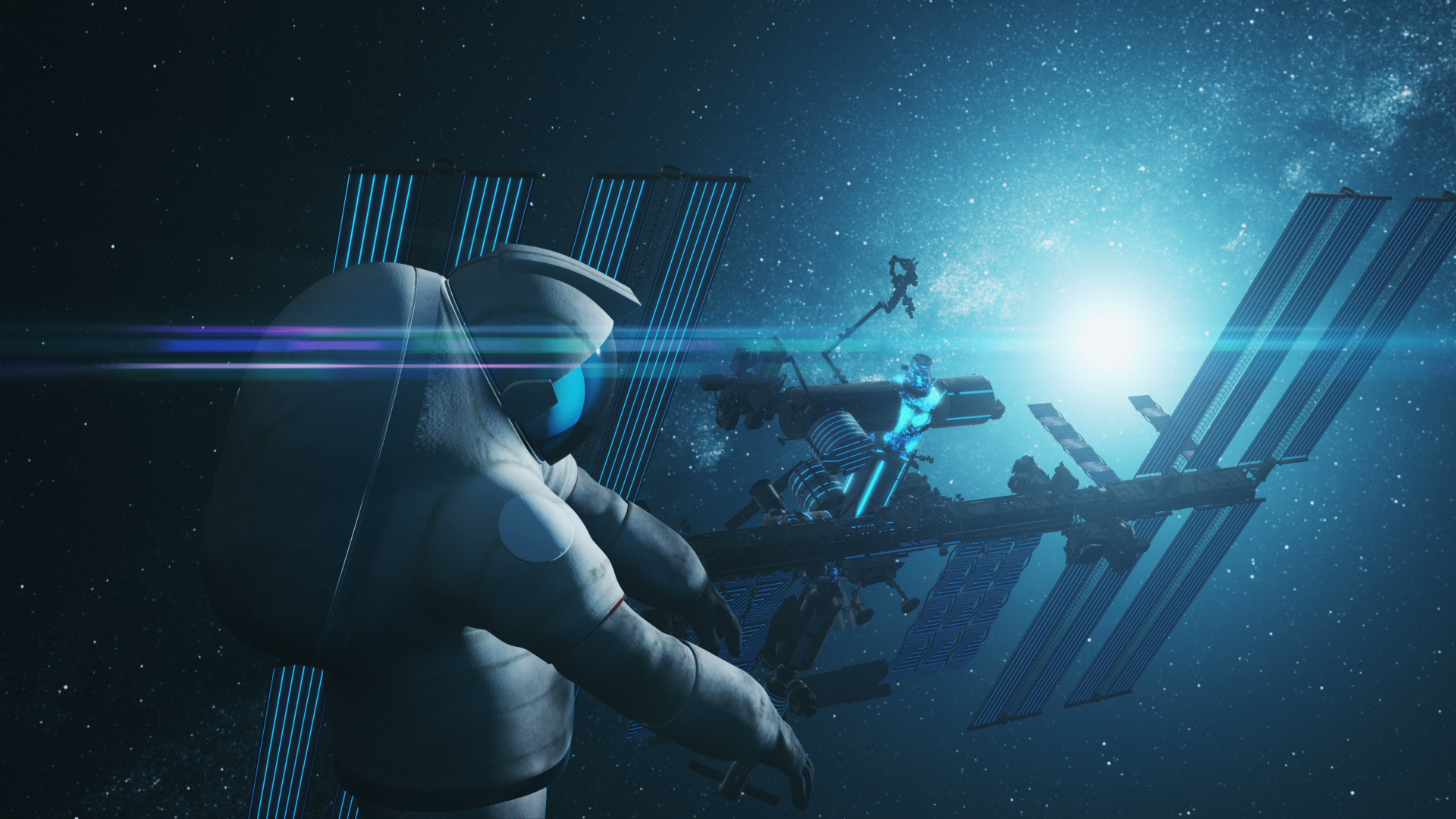ISS Daily Summary Report – 4/20/2023
Payloads: CapiSorb Visible System (CVS): The CVS was primed with water and Red Syringe (fructose). Pump tubing was installed into the Liquid Pump rotor and the system performed experiment runs. The CVS investigation demonstrates a liquid control using capillary forces, over a range of liquid properties that are characteristic of liquid carbon dioxide sorbents. Since …

CapiSorb Visible System (CVS): The CVS was primed with water and Red Syringe (fructose). Pump tubing was installed into the Liquid Pump rotor and the system performed experiment runs. The CVS investigation demonstrates a liquid control using capillary forces, over a range of liquid properties that are characteristic of liquid carbon dioxide sorbents. Since microgravity makes it difficult to control the flow of liquids, carbon dioxide removal methods on the ISS have been unable to take advantage of systems that use specialized liquids, such as those on submarines. Previous experiments have shown that capillary forces, the interaction of a liquid with a solid that draws fluid up a narrow tube, can be used to control liquids in microgravity and could contribute to design of more efficient carbon dioxide removal systems in space. CVS takes this one step further by manipulating liquid properties in microgravity and proving the ability to control the liquid over the full property range.
ISS Ham Radio: An ISS Ham contact was initiated with West Michigan Aviation Academy High School, Grand Rapids, MI. Since the earliest space station expeditions, ISS Ham Radio has allowed groups of students in schools, camps, museums, and planetariums to hold a conversation with the people living in space. As the ISS passes overhead, students have about nine minutes to ask crew members 10 to 20 questions.
Space Acceleration Measurement System-II (SAMS-II): The SAMS triaxial sensor heads (TSH) were moved from Express Rack 6 to the Materials Science Research Rack-1 (MSRR-1) for use by future KEyence Research MIcroscope Testbed (KERMIT) operations. SAMS is an on-going study of the small forces (vibrations and accelerations) on the ISS resulting from the operation of hardware, crew activities, dockings, and maneuvering. Results generalize the types of vibrations affecting vibration-sensitive experiments and the structural life of ISS. Investigators and Structural Analysts seek to better understand the vibration environment on the ISS using SAMS-II data and assessing station loads and dynamics.
NanoRacks CubeSats Deployer-25 (NRCSD-25): The NRCSD hardware was installed onto the Multipurpose Experiment Platform (MPEP). NRCSD-25 will be deploying six different satellites: NEUDOSE will measure and map the real-time radiation dose received by astronauts performing EVAs. YukonSat demonstrates using student-designed satellites for on-demand display of art and audio recordings from Northern Peoples. The project also supports a world-wide game with coded messages to be deciphered by amateur radio operators working together. AuroraSat uses satellites to support design and development of projects by Indigenous and Inuit students. Ex-Alta 2 demonstrates the use of student-designed and developed satellites to predict, monitor, and assess wildfires. LightCube is a student-built satellite with a remote-controlled flash bulb. Amateur radio operators using low-cost equipment can activate the satellite from the ground and produce a brief flash visible to the naked eye. ARKSat-1 demonstrates ground tracking of a CubeSat with a bright LED light. This system of an emitter and a ground chaser, with receiving and tracking capabilities, can measure material between spacecraft and could be used to study atmospheres of other planets and moons in the solar system.
Systems:
Cygnus NG-18 Egress Operations: The crew configured the Cygnus vehicle for departure and hatch closure. This included derouting the Intermodule Ventilation (IMV) Supply Duct and closing the Cygnus hatch. Next, the crew rotated the Common Berthing Mechanism (CBM) Controller Panel Assemblies (CPAs) and closed out the vestibule in preparation for depressurization operations.
Cygnus NG-18 Depressurization Operations: To prepare for NG-18 depressurization, the crew then setup the Internal Sampling Adapter/Vacuum Access Jumper (ISA/VAJ) assembly, Scopemeter, and Multimeter to ensure accurate readings for later vestibule operations. The crew then removed utility jumpers and installed required hardware prior to Cygnus Vestibule depressurization and Cygnus demate. Next, the crew removed the IMV Flange saver, installed the IMV Cap for the Node 1 Deck Aft IMV, reinstalled the Cygnus Hatch Thermal Blanket, took the Positive Pressure Relief Valve (PPRV) to normal, and installed the CBM Center Disk Cover. Finally, at the conclusion of these procedures, the Node 1 Nadir Hatch was closed.
Extravehicular Activity (EVA) Preparation Operations: The crew continued to perform preparation tasks in support of both the RS EVA #57 scheduled on April 25thand the USOS RFG Retrieval EVA scheduled on April 28th. The crew transferred a mesh bag of RS EVA hardware containing Rechargeable EVA Battery Assembly (REBA) Li-Ion Batteries to the US segment. Next, the crew installed the REBA Li-Ion Batteries into the Battery Stowage Compartment and initiated charging of the EVA Li-Ion batteries using the EVA Battery Operations Terminal. Finally, the crew reviewed the Suit Intravehicular (IV) Briefing Package. The Briefing Package provides a reference for IV crewmembers with reminders, emergency briefing, helpful tips, and procedures used during EVA preparation.
Completed Task List Activities:
- None
Today’s Ground Activities:
All activities are complete unless otherwise noted.
- Cygnus Configuration for Departure from Node 1 Nadir
- Cygnus PCM Preheat
- CVS Operations Support
- NRCSD Installation Support
- MSS/SSRMS Maneuver Cygnus Operations
Look Ahead Plan
Friday, April 21 (GMT 111)
Payloads:
- CVS Operations
- ISS Ham Pass
Systems:
- Cygnus Unberth
- RS EVA Tether Inspection
- EVA Procedure Review and Conference
- CHeCS Emergency HMS Contingency Drill Training
- Toilet Pre-Treat Tank Remove and WHC Pre-Treat Tank R&R
Saturday, April 22 (GMT 112)
Payloads:
- ISS Ham Pass
Systems:
- OBT EVA ROBoT Session
- EVA Battery Operations
Sunday, April 23 (GMT 113)
Payloads:
- Crew Off Duty
Systems:
- Crew Off Duty
Today’s Planned Activities:
All activities are complete unless otherwise noted.
- CVS Check Out, Prime, Verify, and ISO
- Cygnus Egress
- Express Failed Light Bulb Replacement
- CBM CPA Rotation and Closeout
- NRCSD Installation Procedure Review, Hardware Gather, Installation on the MPEP, and Historical Documentation Photos
- In Flight Maintenance (IFM) Node 1 Nadir Common Berthing Mechanism Cable Tie Down
- Cygnus Vestibule Depressurization and Configuration for Demate
- NREP NRCSD Video Setup
- JEM Airlock Slide Table (ST) Extension to and Retraction from JPM Side
- CVS Heated and No Humidity Degas Run
- KERMIT SAMS TSH Relocate to MSRR-1
- CVS Open Loop Run and Draw Flow Run
- Russian EVA Tool Transfer
- CVS Solubility and Excursion Run and Shutdown
- EVA Battery Installation and Terminal Charge Initiate
- EVA Suit IV Review
- PCS Laptop Relocate
- ISS HAM Columbus Pass
- Food Physiology Crew Diet Briefing
- Increment 68 Plaque Hanging
- Tablet Updating CrewNet Connection
- Cygnus PCS Command and PROX Link Verification





































